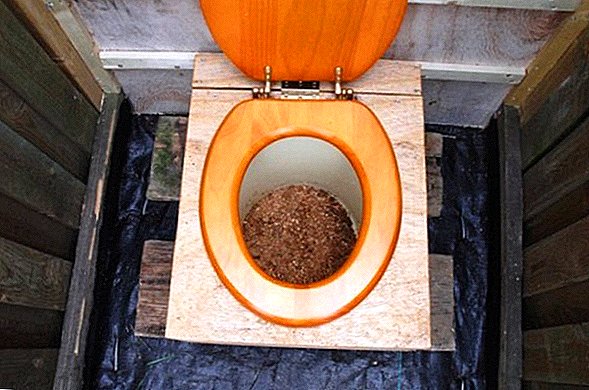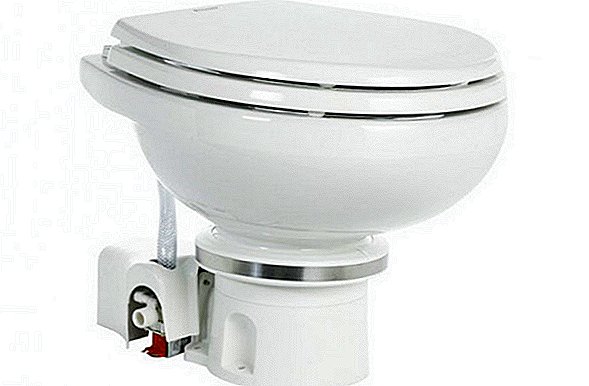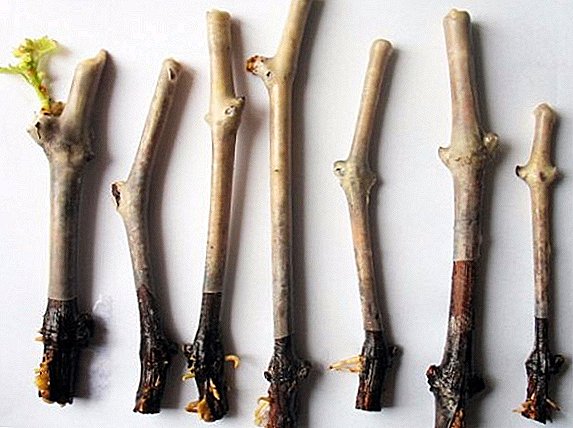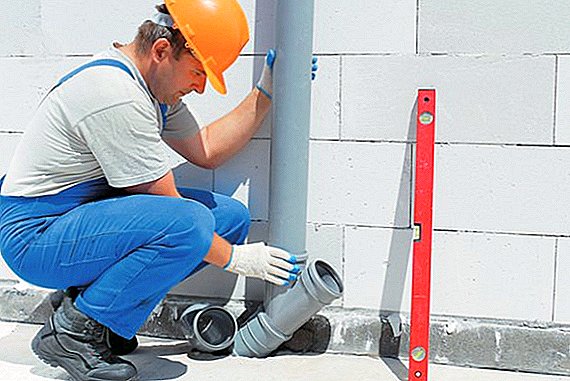 The end of the second decade of the XXI century suggests in the modern private house, including the cottage, the latrine is somewhat more technological than the modest plank booth at the end of the site. It is not surprising, therefore, how advanced sewage systems for country houses and materials for them have become. And all this is quite affordable and feasible for a home wizard when installing by hand.
The end of the second decade of the XXI century suggests in the modern private house, including the cottage, the latrine is somewhat more technological than the modest plank booth at the end of the site. It is not surprising, therefore, how advanced sewage systems for country houses and materials for them have become. And all this is quite affordable and feasible for a home wizard when installing by hand.
Suburban sewage scheme
Any system for the removal and disposal of waste in a residential building, however small, needs to build a scheme that will demonstrate the size of the system on a scale and will help in choosing:
- the type of sanitary ware and its placement, including additional suppliers of wastewater, such as, for example, a bath;
- internal pipe routing route;
- places exit sewer system of the building;
- passing the sewer line outside the building;
- the type of equipment and its location within the site;
- necessary to create a system of materials.

Types of sewer system
The most popular sewer systems today are based on the use of:
- cesspools;
- accumulative tanks;
- two-chamber septic tanks;
- septic tanks with filtration;
- septic tanks with biofilter;
- septic tanks with forced air supply.
Did you know? As established by archaeologists, the earliest in the world layouts of sewage systems, which appeared in Mesopotamia, for almost five thousand years. However, the sewer system, reminiscent of modern, appeared in ancient Rome in the VI century BC.
Cesspit
The sewage drainage method tested through centuries is simple and cheap. For the construction of a cesspool in the form of a well without a bottom, concrete rings, bricks and similar materials are necessary.  Since the bottom of this well consists of bare soil, household liquid waste passes through the well onto it, seeping in and starts to be cleaned. More solid fractions of these wastes are retained in the pit and precipitate. When there are a lot of them in the well, cleaning is required.
Since the bottom of this well consists of bare soil, household liquid waste passes through the well onto it, seeping in and starts to be cleaned. More solid fractions of these wastes are retained in the pit and precipitate. When there are a lot of them in the well, cleaning is required.
We advise you to read about how to install a running water heater, septic tank, air conditioning system, as well as how to make water from the well.
This system operates reliably and justifies its existence, if a day the volume of waste from the house does not exceed a cubic meter. This amount allows microorganisms in the soil to cope with the processing of organic elements and thereby purify water entering the soil through the bottom of the well.
When this volume is exceeded, the water no longer has time to clean and begins to pollute the groundwater. It is worth building a cesspool, if the dacha is visited by a small number of people only on weekends. In any case, this primitive type of sewage system today is becoming less and less popular with country homeowners. 
Storage tank
Installed near the house capacity for receiving waste waste can be plastic, brick, concrete, metal, provided that this container is sealed.
You will probably be interested in reading about how to choose a boiler, jigsaw, saw, chainsaw, motor-cultivator, heating furnace for long burning, pumping station, submersible, circulating and fecal pumps for your home.
This is especially true for land, where the level of groundwater is high. Hermetically sealed tank will protect the soil and groundwater from pollution. The only inconvenience of this system is its dependence on the frequent calls of vacuum trucks, because of which the cost of its operation is quite high. 
Septic two-chamber
This device consists of two tanks, the first of which is equipped with an airtight bottom, and the second is not equipped, being covered with a layer of sand-crushed stone mixture from below.
Did you know? Comprehensive genius Leonardo da Vinci in 1516 even came up with a toilet with flush. But even the French king could not bring the revolutionary idea to life, because at that time there was no water supply or sewerage system at all.
The drains flow into the first reservoir, solid organic matter sinks there, fat particles rise to the top, and partially purified water is located in the middle.
Both volumes are interconnected by a pipe with a slight inclination towards the second tank. According to it, the already partly cleaner water flows into the second tank. And there she, passing through the sand-gravel mixture, as well as through the soil, is additionally cleaned.  It is clear that in the first compartment, which is a septic tank, masses of waste gradually accumulate, in order to eliminate which it is necessary to resort to the services of vacuum trucks.
It is clear that in the first compartment, which is a septic tank, masses of waste gradually accumulate, in order to eliminate which it is necessary to resort to the services of vacuum trucks.
But it is recommended to equip the second tank only when from its bottom filled with a mixture of rubble and sand to the groundwater there will be at least a meter distance. Moreover, this sand-gravel mixture is required to be changed every five years.
Septic tank with filtration
It consists of a reservoir, divided into several sections, connected to each other by slightly inclined pipes. As a rule, such a tank is manufactured at the factory.
The first tank is used for sludge disposal. From it partly clarified water flows into another compartment of the tank. And there anaerobic bacteria, decomposing organic elements, make the water even cleaner, after which it flows into the third tank.  And from it, through the soil, the water reaches filtration fields specially created from the sand-gravel mixture, where it is cleaned up to 80% and is discharged into special ditches or tanks. This method of cleaning liquid waste is advisable only where there is a large tract of land.
And from it, through the soil, the water reaches filtration fields specially created from the sand-gravel mixture, where it is cleaned up to 80% and is discharged into special ditches or tanks. This method of cleaning liquid waste is advisable only where there is a large tract of land.
After all, only from filtration fields to a house or a source of drinking water should be at least 30 m. Plus, the filtering sites themselves occupy a lot of space, although they are underground. In addition, groundwater should in this case rise no higher than 3 m.
Septic tank with biofilter
This type of cleaning device is different in that it can be used on land where the groundwater level is high. It is a reservoir consisting of four sections connected to each other by pipes with a slight inclination.
In the first tank, the drains settle and in the form of partially purified water flow into another compartment. There, water is purified through anaerobic microorganisms, and already in a more clarified form it is sent to the third compartment-separator, and from there - to the fourth.  And there she is already undergoing treatment with aerobic bacteria. They need a constant flow of fresh air coming in here with a pipe that is brought out to a height of half a meter. Due to the processing of these bacteria, water reaches a purity of up to 95% and is quite suitable for watering plants, washing a car and other household needs.
And there she is already undergoing treatment with aerobic bacteria. They need a constant flow of fresh air coming in here with a pipe that is brought out to a height of half a meter. Due to the processing of these bacteria, water reaches a purity of up to 95% and is quite suitable for watering plants, washing a car and other household needs.
This method of sewage treatment is most in demand in country houses with people permanently residing there, because bacteria need a continuous flow of liquid waste, without which they die. And although bacteria are easy to add to the system through the toilet, you will have to wait about two weeks to fully restore their full activity.
It may also be useful for you to know how to build a cellar in the garage, how to get rid of groundwater in the basement, how to make lighting for the house, how to make a stepladder, a summer shower, a visor over the porch, how to build a bath, and also how to make a stove-stove and Dutch oven.

Septic tank with forced air supply
This installation by means of electricity significantly activates wastewater treatment. It does this by means of forced injection of atmospheric air, for which an electric pump and an air distributor are used.
This type of cleaning device may consist of one tank, divided into three compartments, and of three different tanks, connected to each other by means of inclined pipes.
The initially treated wastewater from the first compartment is poured into the aeration tank, which is the second section. There is aerobic sludge, supplemented with plants and microorganisms. That they need a forced supply of fresh air.
After that, the more purified liquid together with the sludge is poured into the third tank, where, standing up, it undergoes a better cleaning, and the sludge in the sludge returns to the aeration tank with the help of a pump.  Forced air is an effective catalyst for the process, as a result of which water is purified much faster and more efficiently.
Forced air is an effective catalyst for the process, as a result of which water is purified much faster and more efficiently.
And although the installation consumes little electricity, it nevertheless needs an electrical network, which is partly a drawback. In the operation of this system, it is also necessary to continuously live in the home of someone from the household.
How to assemble the sewage with your own hands
With the quality scheme of the future sewage system and with the availability of all the necessary materials, you can go directly to its phased construction.
There are three stages that imply:
- installation of internal sewer system;
- laying pipes outside the home;
- construction of purification devices.
Distributing pipes and risers
Internal wiring includes horizontally placed pipes connecting plumbing to a plumbing pipe that is a riser. And it connects to the highway, leading sewage out.
Ideally, the installation of a sewer system is desirable to match with the construction of the house, but it is quite possible to assemble the inside layout and in the already constructed house, especially if it is small.
It should adhere to such requirements:
- Since sewage from sanitary devices is discharged by gravity, pipes that go from them to the riser must be laid with a certain bias.
- Sanitary equipment must be separated from the pipelines with hydraulic locks in the form of siphons, which are a curved pipe with permanent water in it, which does not allow odors to penetrate from the sewage system into the premises.
- The pipe connecting the toilet to the riser should not exceed 1 m.
- Intra-house sewer system requires ventilation, for which the riser is brought out with a slight elevation above the roof.

Important! The toilet should be connected to the horizontal wiring in the lowest part of the floor.
Pipe routing
If pipes are installed in an already constructed house, then there are three ways to install them:
- with the help of stoning in the walls they make ditches in which the pipes are hidden;
- put them on the floor;
- mounted on the walls with clamps.
The pipeline is collected, starting from the riser and ending with plumbing. The main thing when distributing horizontal pipes is to establish the required angle of inclination.
The larger the pipe, the smaller the angle should be. For example, with a pipe diameter of 50 mm, one end of its meter length must be 30 mm higher than the second, and with a diameter of 200 mm, this elevation is only 7 mm.
Video: sewer pipe layout At first glance, it seems that the greater the slope of the pipeline, the better it will drain. However, in fact, excessive tilting causes the water to roll down the pipe too quickly, and the harder parts of the effluent do not keep up with it and linger in the pipeline.
We recommend reading about how to make a warm floor, glue the plinth, how to put the socket and the switch, how to remove the paint from the walls, whitewash from the ceiling, how to glue the wallpaper, how to sheathe the wall with gypsum cardboard, how to properly whiten the ceiling in your house.
Installation and installation of the riser
With the installation of an in-house sewer in the form of a tower, the installation of an internal sewer system begins. In its lower part, the riser is connected to a pipe passing through the foundation and leading out the drains to the outside, and at the top it is crowned with ventilation rising above the roof.
Important! The best option when the whole house has only one riser.

Installation and installation of the riser are made in the following sequence:
- On the wall, at the place of passage of the future riser, it is necessary to draw its axis with a pencil. If desired, a recess is made in the wall, slightly wider and deeper than the diameter of the riser pipe. When the pipe is mounted to the wall outside, clamps and brackets are used. Fasteners should be installed under the sockets connecting the pipes, the distance between the fasteners should not exceed 4 m.
- Then it is necessary to pre-assemble the riser and attach it to the wall in order to check whether all dimensions have been correctly taken into account with regard to the fittings for connecting the horizontal part of the system. It also determines the installation location of fasteners, if there is an external installation of the riser on the wall. It should be borne in mind that the pipe should not be installed close to the wall, the gap between them should be at least 3 cm.
- Eliminating all errors in the installation of pipes, using seals collect riser and fasten it with clamps, if external fastening is provided.
- Next, you need to connect the riser to the pipe that brings the drains out. And the upper end of the riser can be connected to the fan pipe, which rises above the roof.
Pipe and vacuum valves
The sewage pipes used for ventilation of sewage systems connect the internal system with the external environment, helping:
- withdraw harmful and foul-smelling gases that form in the sewer system to the atmosphere;
- maintain the necessary pressure within the system.
For all its usefulness, fan pipes are not at all mandatory in all housing constructions without exception. In a small one-story country house, where the volume of wastewater is small, it is quite possible to do without this device. But in the houses of large, two or more floors, with a considerable number of tenants, fan devices are certainly necessary.
They work on the principle of suction of atmospheric air into the sewer system when the air inside is diluted. This is assisted by vacuum valves, which just let in atmospheric air when its pressure in the system drops, but prevent the gases that accumulate in the system from escaping to the outside.  Install the fan pipes with vacuum valves on the roofs of the building, where they, as a rule, rise 20 cm above the roof. Sometimes this ventilation is installed in the attic rooms of the buildings.
Install the fan pipes with vacuum valves on the roofs of the building, where they, as a rule, rise 20 cm above the roof. Sometimes this ventilation is installed in the attic rooms of the buildings.
Sewage release
Sewage release is a system of pipes, which is located under the foundation of the house and serves as an extension of the riser. It is an intermediary between the internal collector and the external part of the sewer system.
The most difficult point in its device is to go outside under the foundation or through it to connect with the external pipeline.
Equipment for production requires pipes of the same diameter as that of the riser, as well as elbows that convert the vertical pipeline to the horizontal position, in which it is led out through the foundation.  Sewage release
Sewage release
Learn more about how to make a gable and hipped roof, how to make a mansard roof, how to cover the roof with ondulin and metal tile, how to make a blind area of the house, build a formwork for the foundation and insulate the basement of the house outside.
Pipe laying
The external network of the sewage system starts from the exhaust coming out of the foundation and goes to the cleaning device, where it delivers the liquid effluent from the house.
For the device off-site sewage should follow these rules:
- the external pipeline must be located at such a depth that it does not freeze in winter;
- in the absence of the opportunity to dig a deep trench, the pipe must be insulated;
- every ten meters on the straight sections of the pipeline and at its corners it is necessary to install inspection wells.
 Apart from digging a trench to a non-freezing depth, laying a pipe does not require much effort:
Apart from digging a trench to a non-freezing depth, laying a pipe does not require much effort:- First, the trench is in readiness, consisting in the required depth and inclination towards the cleaning device.
- At its bottom is poured a 10-centimeter layer of a mixture of sand and clay.
- A pipe is placed on top of this layer.
- The gap between it and the walls of the trench is also filled with this mixture.
- The trench is filled with previously excavated soil.
- Нарушенный этими операциями ландшафт восстанавливается.
Септик
Ancient cesspools without bottom are now used less and less. Instead, they use storage and cleaning devices. The first of these is a large reservoir, hermetically sealed, with the result that its contents do not come into contact with the surrounding ground.
Video: choosing a septic tank for a private house
This component of the suburban sewage system is best used in areas with high groundwater levels, as well as in country houses and country houses, which are visited infrequently and by a small number of people.
If the country house is large, equipped with many types of plumbing and constantly populated by a large number of residents, then you need a septic tank with soil after-treatment of drains or with forced aeration.
Device
The accumulative type of sewage system works very simply: liquid drains enter the reservoir and accumulate in it without any contact with the surrounding soil. After the tank has been completely filled with drains, it is necessary to resort to the services of vacuum trucks to remove them.
As storage tanks are used as large plastic tanks factory made, and independently made of brick, concrete, concrete rings or welded to each other iron barrels.  Different types of septic tanks are more complicated. They consist of several sections, in the first of which solid elements of the effluent precipitate, being subjected to anaerobic treatment by microorganisms, and partially purified water flows into the next section, where it is purified using various filtering methods.
Different types of septic tanks are more complicated. They consist of several sections, in the first of which solid elements of the effluent precipitate, being subjected to anaerobic treatment by microorganisms, and partially purified water flows into the next section, where it is purified using various filtering methods.
The choice of one or another type of septic tank is determined by the level at the site of groundwater, the size of the site itself, as well as the house, the number of permanent residents and sanitary facilities that they use.
Building
For the construction of cumulative capacity should:
- Dig a pit.
- Install a concrete base in it.
- Build a brick wall around it, at the top of it providing a hole for the sewer pipe. On top of the concrete cover should be another hole for the vacuum truck hose, which at all other times should be tightly closed.
- Instead of bricks, you can use concrete rings or welded metal.
They are mounted differently, but their installation is very similar:
- First you need to dig a pit, which in length and width should be about half a meter larger than the capacity installed in it.
- Then the bottom of the excavation should be leveled and covered with a 2 cm layer of sand.
- For concrete and plastic containers, concreting of the base is required.
- After that it is necessary to establish the tank.
- The installed tank should be connected to pipes, one of which will be used for draining sewage, and purified water flows out of the other.
- Then, if necessary, it is possible to attach elements of water purification using soil.
- You should also install hatches.
- And, finally, you need to fill the tank with the soil that was previously removed.

Alternatives
If someone does not want or is not yet able to install a sewage system in his country house or country house, he has the opportunity to do without it using dry closets. They are autonomous devices that do not need to be tied to the sewer system.
It will be useful for you to read about how and where to build a toilet in the country, how to choose the best bio toilet, and also to find out how the peat bio toilet works.
Currently, there are many types of such toilets, but the most popular among them are:
- peat;

- liquid;

- electric.

Peaty, as it is easy to understand from the name, use special peat with bioactivators for composting waste products. In the liquid used special solutions that accelerate the processing of waste products.
And the electric ones, the most expensive, separate the waste into solid and liquid fractions, the first of which is then dried and the second is disposed of.
Given the seeming complexity of this process, installing a sewage system in the house with their own hands is quite within the power of the home master. With the right scheme of the future system, the availability of materials and a great desire to realize the intended, success, as practice shows, comes almost always.















